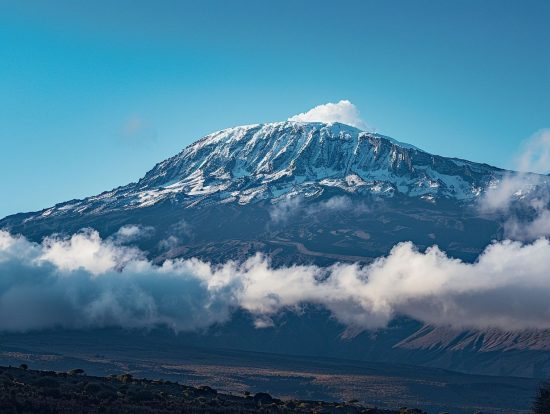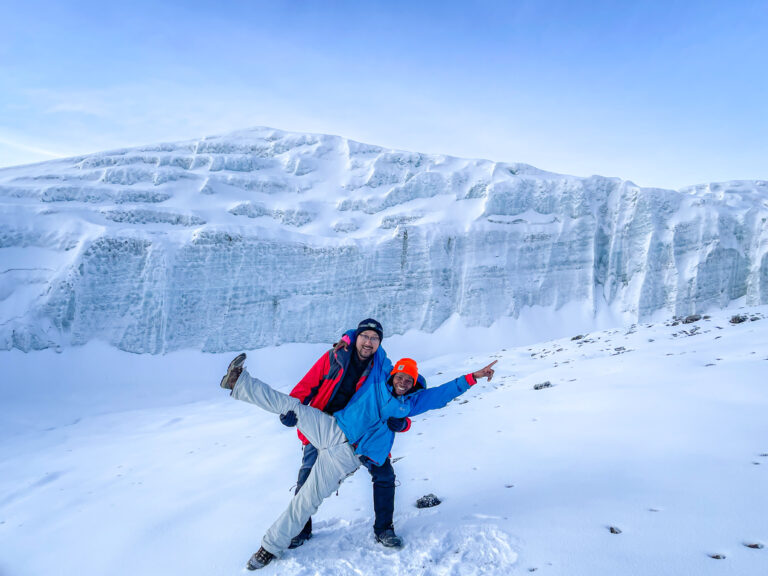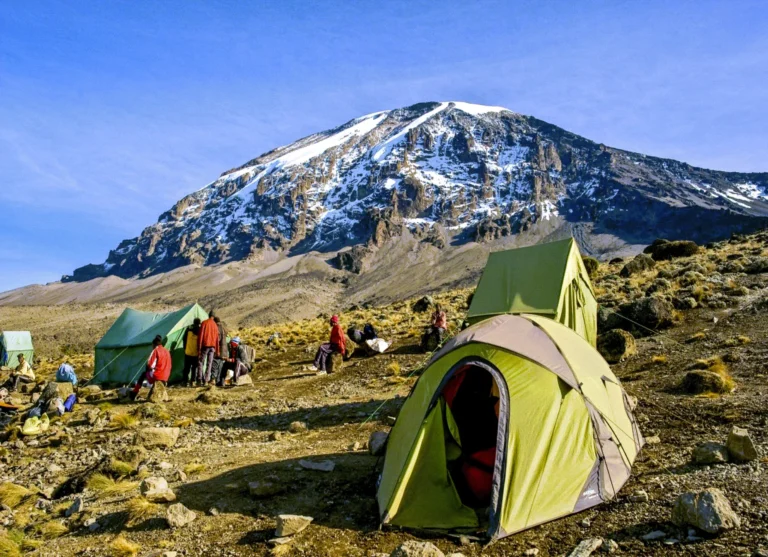Mount Kilimanjaro, standing at 5,895 meters (19,341 feet), is the tallest mountain in Africa and one of the Seven Summits of the world. Located in northeastern Tanzania, it is a free-standing volcanic mountain that attracts adventurers and trekkers from across the globe. Kilimanjaro is made up of three volcanic cones: Kibo, Mawenzi, and Shira, with Kibo being the highest peak.
There are several popular routes for climbing Mount Kilimanjaro, each offering different experiences and challenges:
•Marangu Route – Known as the “Coca-Cola” route, it’s the only one with hut accommodations, making it more comfortable for climbers.
•Machame Route – Often referred to as the “Whiskey” route, this is one of the most scenic and popular routes, known for its breathtaking views.
•Lemosho Route – A quieter, less crowded route that offers an extended trek through varied terrain, with a higher chance of summit success.
•Rongai Route – The only route that approaches the mountain from the north, it is less frequented and provides a different perspective of the landscape.
•Northern Circuit – The longest and newest route, offering stunning views and a more gradual ascent, providing excellent acclimatization opportunities.
•Climate Zones: The mountain features five distinct climate zones, from tropical rainforest at the base to arctic conditions at the summit.
•Dry Season (June – October): Offers the clearest skies and the best weather conditions for summiting.
•Wet Season (November – May): More challenging conditions, though still possible for experienced climbers.
Kilimanjaro is home to diverse ecosystems, ranging from rainforests at the lower elevations to alpine deserts and glaciers near the summit:
•Rainforest Zone: Rich in wildlife, including monkeys, elephants, and a variety of bird species.
•Mooreland & Alpine Desert Zones: Higher up, the environment becomes harsher, with stunning landscapes and hardy flora.
•Glaciers & Snow: Kilimanjaro once had significant glaciers, but due to climate change, they have significantly diminished. However, the ice fields at the summit remain an iconic feature of the mountain.
Climbing Difficulty and Preparation
Climbing Mount Kilimanjaro is a challenging but achievable feat for most people, requiring good physical preparation and mental determination:
•Altitude: The high altitude can lead to altitude sickness, so acclimatization is key.
•Fitness Level: Moderate fitness is enough for most climbers, though prior training (hiking, cardio) is recommended.
•Duration: Climbs typically last 5-9 days depending on the route.
•Uhuru Peak: The highest point on the mountain and the most sought-after goal for trekkers.
•Stunning Views: From the summit, you can see a panoramic view of the surrounding landscapes, including Moshi, Arusha, and even Mount Meru on clear days.
•Crater: At the summit, there’s a small crater with a striking Reusch Crater, though it’s no longer an active volcanic site.
•Iconic Achievement: Climbing Kilimanjaro is a bucket-list experience for many adventurers.
•Unique Ecosystems: The mountain offers an extraordinary range of landscapes and ecosystems within a relatively short distance.
•Accessible Trekking: No technical climbing skills are required, making it accessible for those in good physical condition.
•Unforgettable Views: The views from the summit, particularly the sunrise, are breathtaking.
There are various accommodation options near Mount Kilimanjaro for trekkers and tourists:
•Before and After the Trek: Many visitors stay in Moshi or Arusha, where there are plenty of hotels and lodges catering to trekkers.
•On the Mountain: Climbers usually stay in tented camps along the routes, with experienced porters providing supplies and equipment.
•By Road: Mount Kilimanjaro is easily accessible from Arusha or Moshi, with both being a short drive from the mountain.
•By Air: There are regular flights to Kilimanjaro International Airport (JRO), which is about an hour’s drive from the base of the mountain.
Why Visit Mount Kilimanjaro?
•Adventure of a Lifetime: Summiting Kilimanjaro is a life-changing experience for many trekkers.
•Natural Beauty: The diverse landscapes, from tropical rainforests to arctic glaciers, make it an incredibly scenic journey.
•Cultural Significance: Kilimanjaro is an important cultural and spiritual symbol for the people of Tanzania.




© 2025 Crafted by FCN VISUALS